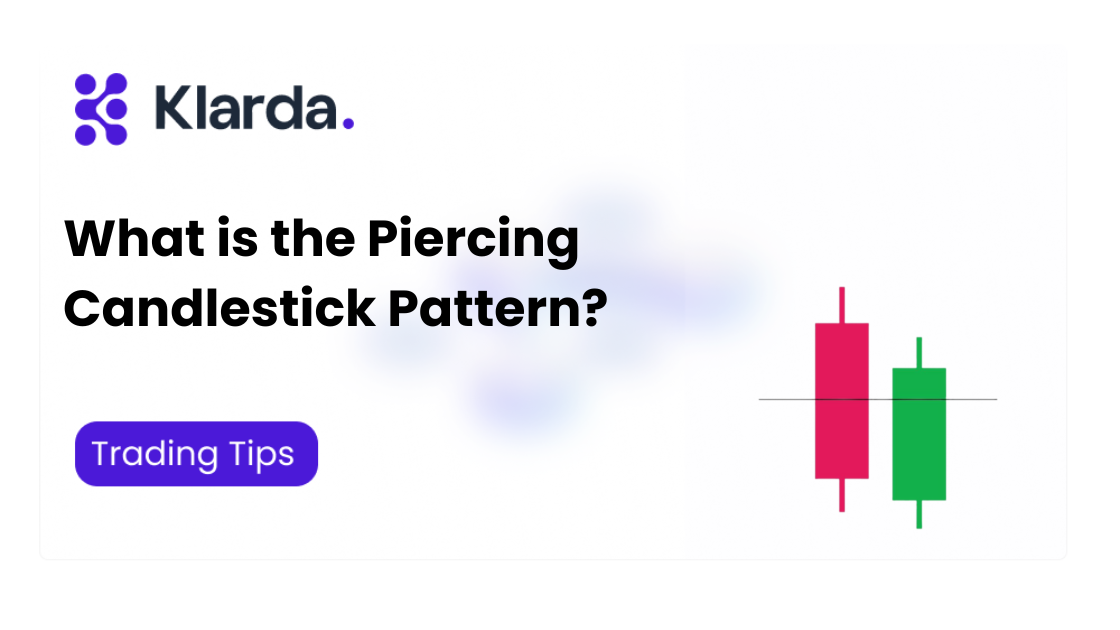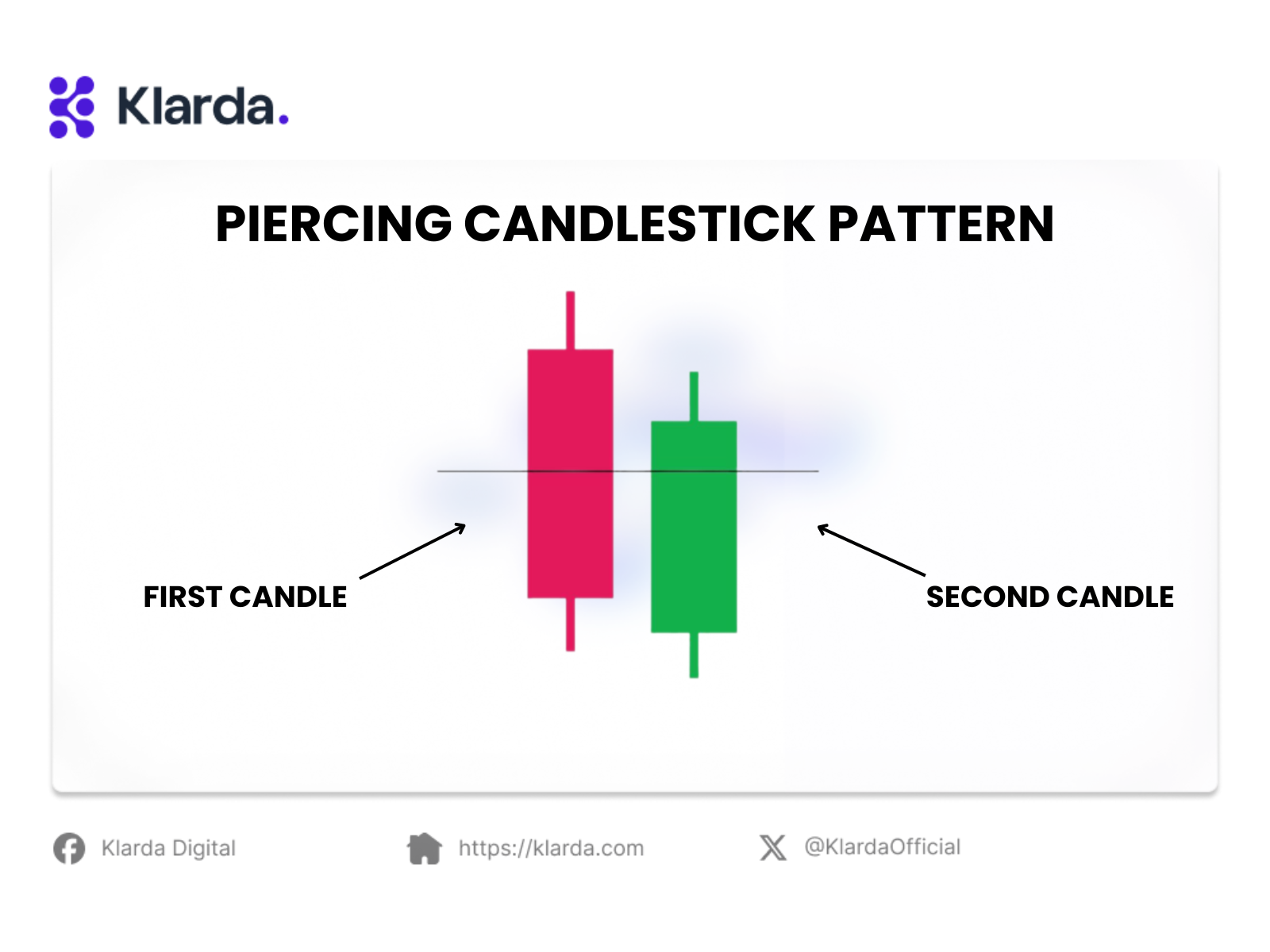Piercing Candlestick Pattern
The Piercing Candlestick Pattern is a popular technical analysis tool among traders. So, what exactly is it?
The Piercing Candlestick Pattern is a widely recognized candlestick formation used in trading. It consists of two candles and is known for indicating a potential reversal from a downtrend to an uptrend. Let’s take a closer look at how this pattern forms and what it can signal in the markets.

KEY TAKEAWAY
- The Piercing Candlestick Pattern is a two-candle formation signaling a potential short-term reversal from a downtrend to an uptrend
- The Piercing Candlestick Pattern, spanning two days, indicates a shift from selling pressure to increased buying, signaling a potential short-term uptrend
- Here are two effective trading strategies with the Piercing Pattern: combining it with a Hammer candle and using it to identify support levels.
- The Piercing Candlestick Pattern offers notable benefits but also has some disadvantages.
DEFINITION OF THE PIERCING PATTERN
The Piercing Candlestick Pattern is a two-candle price pattern indicating a potential short-term reversal from a downtrend to an uptrend.
In this pattern, the first candle (or the first day) is a bearish candle, with the opening price near the high and the closing price near the low, and a trading range that is average or above.
On the second day, the pattern shows a bullish candle that opens near the low and closes near the high, with a gap down from the closing price of the previous bearish candle.
The second candle in the Piercing Pattern must cover at least half of the previous bearish candle's body, with its closing price above the midpoint, indicating that buying pressure has significantly offset the prior selling pressure.

FEATURES OF THE PIERCING PATTERN
This pattern consists of two consecutive candles and has three key features:
- Preceding Downtrend: The pattern forms after a downtrend. While it can occur after a short downtrend, it is not a clear reversal signal if it appears following a strong uptrend.
- Gap Down: On the second day, there is a gap down at the open. The Piercing Pattern is commonly observed in stock charts due to their ability to have overnight gaps, but it can also appear in charts of other assets with weekly timeframes.
- Closing Price: The second candle must close above the midpoint of the first candle, indicating that buyers have overtaken sellers on the second day.
The first candle is usually dark or red, representing a bearish day, while the second candle is green or lighter, indicating a bullish day with a closing price higher than the opening price.
For traders looking for a reversal to an uptrend, a red candle followed by a green one can be a promising signal.
The Piercing Pattern is notable because the timing of the reversal can often surprise many market participants.
HOW TO TRADE WITH THE PIERCING PATTERN
Here are two top ways to effectively trade using the Piercing Pattern:
Combining with a Hammer Candle
Combining the Piercing Pattern with a Hammer candle enhances its effectiveness, with the Hammer’s opening and closing prices aligning with the first and second candles, respectively, providing additional signals for a potential price increase.
Using the Piercing Pattern to Identify Support Levels
Previously, the Energy SPDR ETF (XLE) chart established a support level, indicated by a blue line. The first candle in the Piercing Pattern forms a new low for the existing trend but does not reach the support level.
The second candle then tries to push the price lower towards the support level, but sellers fail to break through.
Buyers take control, driving the price up to 2/3 of the first candle's body, initiating a new upward trend.
PROS AND CONS OF THE PIERCING PATTERN
The Piercing Candlestick Pattern offers several key benefits:
Ease of Use: It is a straightforward chart pattern that traders can easily understand and apply.
Identification: The pattern is relatively simple to identify without extensive searching or complex analysis.
Entry and Exit Points: It provides clear signals for determining entry and exit points, making trading decisions more straightforward.
However, there are also some disadvantages:
Rarity: The Piercing Line pattern does not occur frequently, which can limit trading opportunities.
Effectiveness: Compared to other patterns like the Doji or Morning Star, the Piercing Line may not be as reliable or effective in predicting price movements.
The Piercing Candlestick Pattern is a reversal pattern with an average signal strength. Therefore, it is important to carefully consider your decision before entering a trade. It’s advisable to use additional tools to support and validate the trading signal to maximize the effectiveness of the Piercing Pattern. The Klarda app is an excellent tool for this purpose due to its convenience and accuracy.
Updated 8 months ago